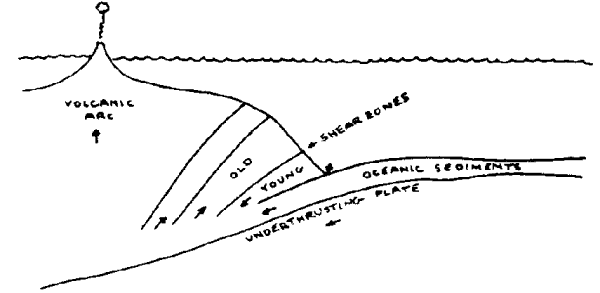 |
Science Frontiers ONLINE No. 19: Jan-Feb 1982 |
|
|
Stratum Shuffling At Plate Boundaries
In March 1981, the Glomar Challenger was drilling into the oceanic sediments north of Barbados. Here, oceanic sediments are apparently being scraped off the oceanic plate as it thrusts under the North American plate. As a result, older Miocene deposits now overlie younger Pliocene deposits. Direct observations of the pressure in the zone where the shearing occurs showed it to be some 20 bars higher than the equilibrium pressure of 550 bars. This higher pressure may support the theory that low-angle thrust faults many kilometers wide are physically possible because high pressure fluids lubricate the shear zone, allowing massive thicknesses of sediments to slide over one another without resulting in wholesale fracturing and obvious damage.
(Anderson, Roger, N.; "Surprises from the Glomar Challenger," Nature, 293:261, 1981.)
Comment. Scientific creationists have long thought that the many low-angle thrust faults, where many miles of older rock are superimposed on younger rock, contradict geological dating schemes and therefore the theory of evolution. Establishment geologists, although somewhat amazed at the sizes of some of the overthrusts, especially one in Wyoming, have never despaired of finding a reasonable physical mechanism that would preserve the Law of Superposition and the idea of dating rocks by their included fossils. The Glomar Challenger results should buoy their spirits. Nev-ertheless, we must wonder how widespread stratum shuffling really is. What stratigraphic sequence is now immune from claims that some of its members were inserted in the wrong order timewise?
Reference. For more on "stratum shuffling" see ESR3 in our Catalog: Inner Earth. To order, visit: here.
